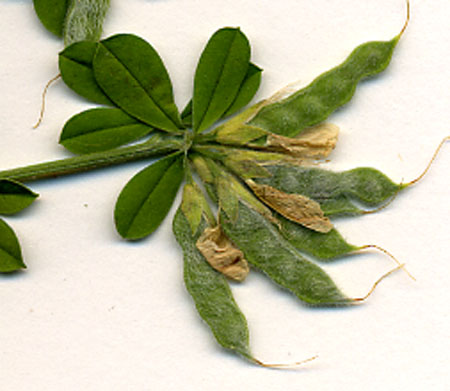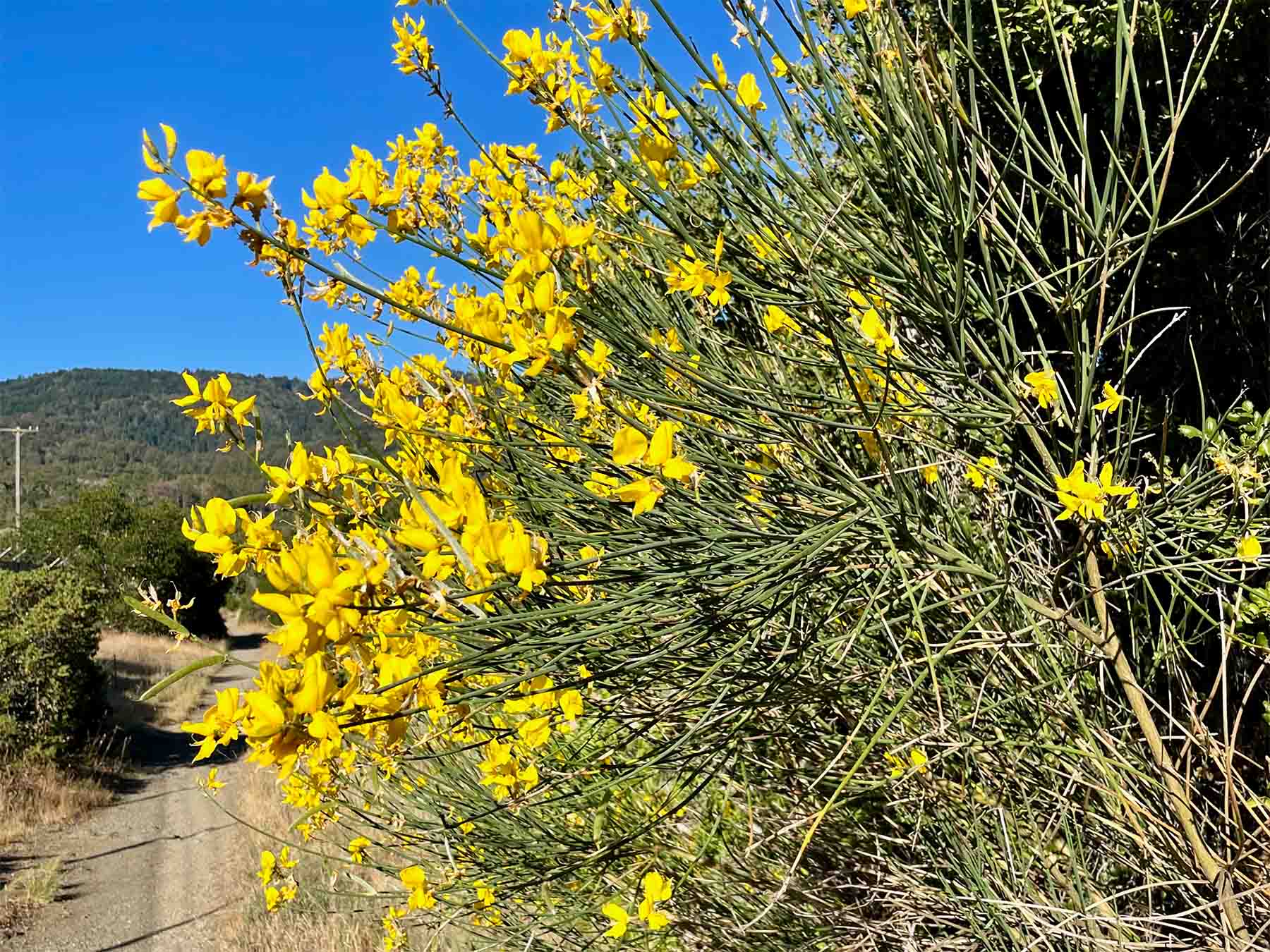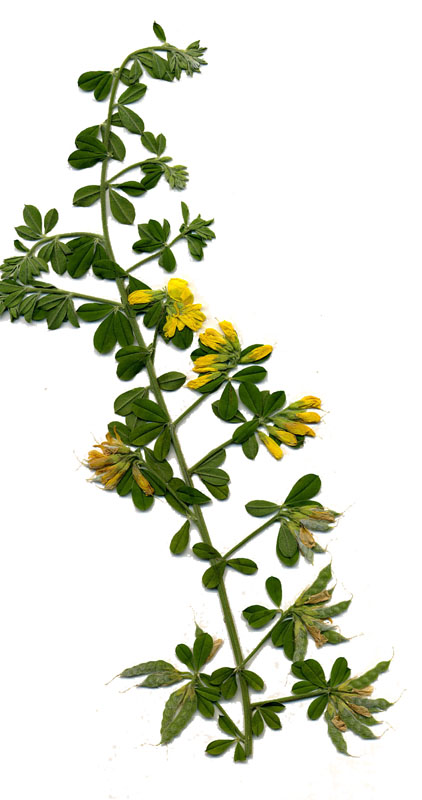Genista monspessulana
 French broom
French broom
Several brooms were introduced into California in the mid-1800s for landscape planting, mine tailings stabilization, and roadside erosion control.
French broom is a widespread environmental weed of national, state and urban parks and fallow land mainly in Central California and southern Oregon. In California it has been estimated to invade at least 100,000 acres. Invaded habitats include coastal plains, mountain slopes, riverbanks, road cuts, forest clear-cuts grassland and open canopy forest on a wide range of soil types. The problems caused by French broom in its exotic range result from its tendency to form mono-specific stands that shade out native species, slow reforestation, and increase fire frequency and intensity. You can see the yellow blooms of French broom just a few yards from the northwest corner of 651 Serra Street, weedy among the cultivated plantings.

The other two common brooms in our area, Spanish (Spartium junceum) and Scotch (Cytisus scoparius), are also encountered here and there on campus.

For descriptions and photographs of these plants visit California Dept. of Food and Agriculture Encycloweedia.
About this Entry: John Rawlings authored the main text of this entry ca. 2005. Minor edits (Jun 2022, SP). Made French broom the solid taxon on the heading of this entry (Jan 2024, SP).




